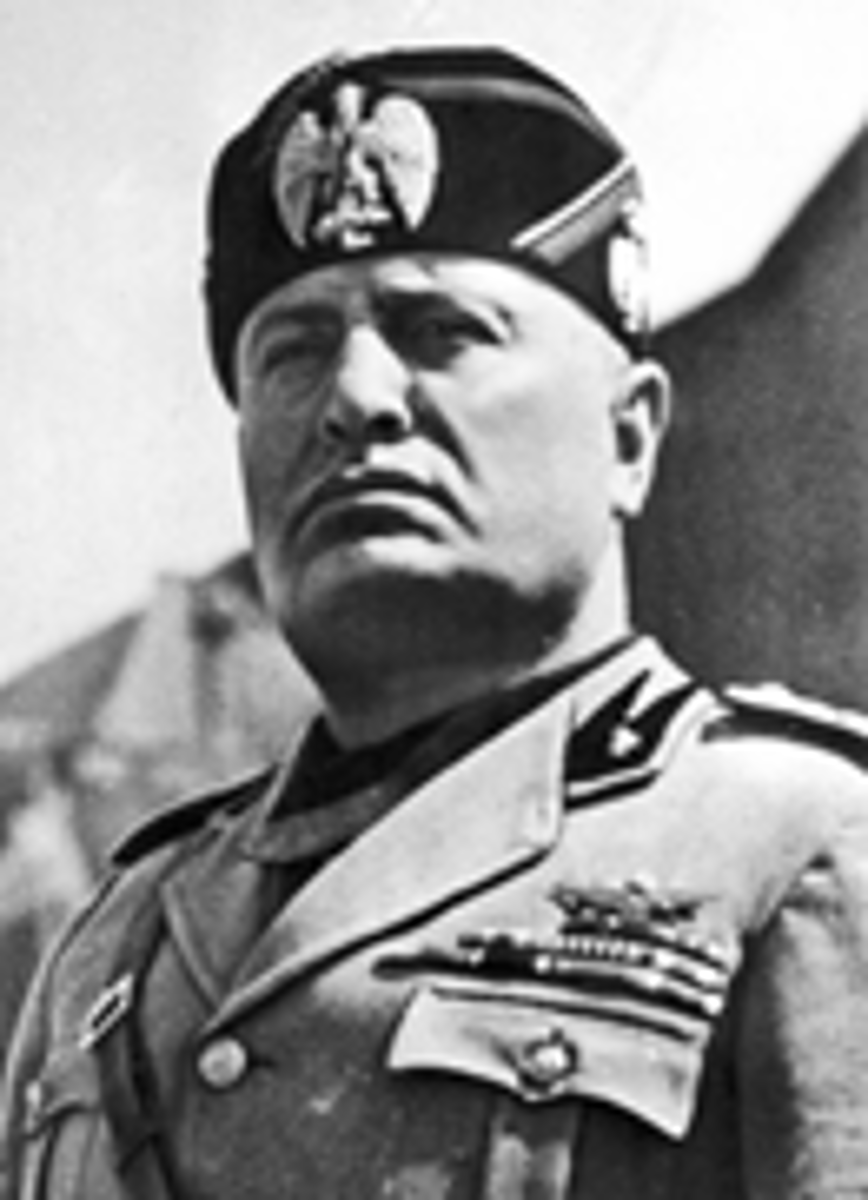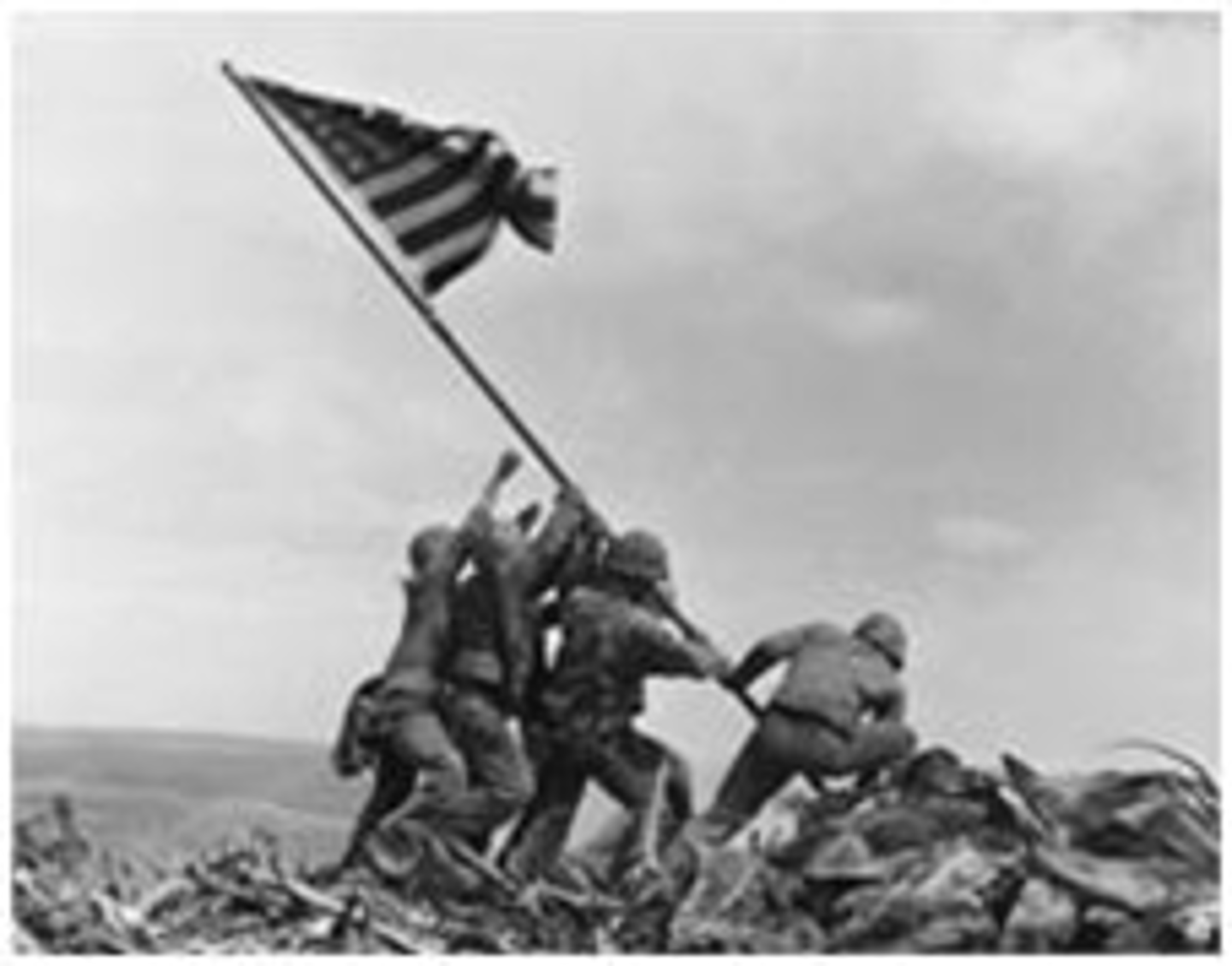WWII
1/55
There's no tags or description
Looks like no tags are added yet.
Name | Mastery | Learn | Test | Matching | Spaced |
|---|
No study sessions yet.
56 Terms
All of the following were leaders of totalitarian governments in the 1930's and 1940's except:
Neville
Chamberlain.
In what country was the Fascist party and government formed?
Italy
The Battle of Britain forced Germany to do what to their war plans in Europe in 1942?
Put off the invasion of Britain.
The Nazis practiced genocide toward Jews, Gypsies, and other "undesirable" peoples in Europe. What does the term "genocide" mean?
Deliberate extermination of a specific group of people.
The term "blitzkrieg" was a military strategy that depended on what?
c. Surprise and quick, overwhelming force.
In an effort to avoid a second "world war", when did the Britain and France adopt a policy of appeasement toward Germany?
Before the war began.
The United States entered World War II as a direct result of what?
The attack on Pearl Harbor.
Which of the following was a false promise from Hitler not to take any more land in Europe?
The Munich Pact
9) Which of the following matches a nation with that it invaded in the 1930s—before World War II was declared?
Italy -Ethiopia
Which nations came to be known as the Axis powers after they signed a mutual defense treaty in 1940?
Germany, Japan, and Italy
The Axis powers' alliance worried Franklin D. Roosevelt because he saw that the United States, if drawn into the war, would have to
Fight on two oceans.
In following a policy of appeasement, Britain and France were taking what controversial action(s)?
Giving in to Hitler's demands.
The title of Hitler's book, Mein Kampf, in English means what?
"My Struggle."
Hitler's main method for achieving "lebensraum" or "living space" for the German people was to do what?
Conquer other countries.
Which of the following was the leader of Japan's dictatorial government during the 1930's and 1940's?
Hideki Tojo
The Munich Conference was held to address the problem of a German threat to which nation?
Czechoslovakia.
Which of the following features did Nazi society stress to its citizens?
Nationalism
The Weimar Republic was the post-‐World War I government of what European country?
Germany
Il Duce was the title of which of the following totalitarian leaders of World War II Europe?
Benito Mussolini
Which country invaded Rhineland in 1936, touching of a series of events that would eventually lead to the start of World War II?
Germany
Which country invaded China in 1938 as part of a mass campaign of territorial expansion?
Japan
The Germans first successfully used the blitzkrieg tactics in an attack on what eastern European country, which helped to also set off World War II?
Poland.
24) Who was General Charles de Gaulle?
The leader of the French government-‐in-‐exile and the French during World War II
Which of the following technologies for the British helped to give them an advantage in the fighting of the Battle of Britain?
Radar.
Built following the destructive conclusion to the First World War and supported by a massive propaganda campaign, what was the intended purpose of the Maginot Line?
To protect France from German invasion
Which of the following statements most accurately reflects Roosevelt's feelings toward the events in Europe prior to 1941?
Wanted to help the Allies, but had to appease U.S. citizens who opposed the war
What was the Lend-‐Lease Act?
A policy allowing the president to provide arms to certain foreign countries
What was the name given by Hitler to his supposed "master race"?
Aryans
The strategy of "island hopping" in the Pacific, which was developed by a joint US Army-‐ Navy command, involved Allied attacks on what?
Only islands that were not well defended and offered strategic advantages.
Knowing that the Nazis were expecting an invasion of Europe at some point, what region of France was chosen for the D-‐Day invasion?
Normandy
What is the codename for the Allied invasion of North Africa, where American troops got their first takes of action against German / Axis forces?
"Operation Torch"
What are the German troops in North Africa who became legendary for their ability to fight in hostile desert settings?
c. Afrika Korps
Who were the big three?
Stalin, Roosevelt, Churchill
Which of the following was a reason explaining why Hitler chose Austria as the first country to annex in 1938?
He was originally from Austria, Majority of people living in Austria were German, and Most Austrians favored a union with Germany
Which of the following battles marks the turning point of World War II in the Pacific Theater?
Midway
During the Munich Conference the leaders agreed on the strategy of giving into Hitler's demands in order to prevent war. What is this strategy called?
Appeasement
_________________ refers to the mass execution or elimination of people (8-13 million) that threatened Joseph Stalin's totalitarian government in the Soviet Union.
Great Purge
What was the significance of World War II's Normandy Invasion, commonly referred to as D-Day?
It marked the beginning of the end for Nazi Germany.
Which of the following refers to the research and development of the atomic bomb by American scientist during WWII?
Manhattan Project
_________________ was a book written by Adolf Hitler while serving a prison sentence where he outlined his plans for Germany.
Mein Kampf
The man pictured above was the Fascist leader Italy starting in 1921 and would later form an alliance with Adolf Hitler to form the Axis Powers. Who is he?
Benito Mussolini

Which of the following me seceded FDR as President of the United States and is most notably remembered for his decision to end the war with the Japanese by using the A-bomb?
Harry Truman
What impact did the Japanese attack on Pearl Harbor have on World War II?
It pulled the United States into World War II.
Why was World War II's Battle of the Bulge important?
It was the final major Nazi offensive against the Allied forces in the war.
Which immortalized WWII Battle is show with soldiers fighting to stand up a US flag?
Iwo Jima

24. Why did Congress pass the Lend-Lease Act and amend the Neutrality Acts in 1941?
to allow the U.S. to lend military equipment and supplies to any nation the president said was vital to the defense of the U.S.
.At this conference, the two leaders agreed on a strategy known as "Germany First" in which they agreed to concentrate their war efforts on defeating Germany. Why did the United States and the United Kingdom think this would be an effective strategy?
They viewed Germany as the greatest threat in the war.
The Potsdam Declaration called for the immediate surrender of Japan or else they would face "prompt and utter destruction." Japan's refusal to surrender led directly to which of the following?
the dropping of the atomic bombs
The USSR pledged which of the following at the Yalta Conference in February of 1945?
to attack Japan within three months of German surrender
Which of the following best explains why President Harry S. Truman decided to drop the atomic bombs on Hiroshima and Nagasaki at the end of World War II?
He wanted to avoid an American invasion of Japan
Which of the following were a series of trials held to punish the surviving Nazi leaders for the injustices they had committed before and during WWII?
Nuremberg Trials
Which of the following refers to the German military strategy where modern technology combined with speed and force to surprise and overwhelm their targets?
Blitzkrieg
Which of the following terms refers to the mass execution and deportation of Jews and other groups deemed undesirable by Hitler and the Nazis?
Holocaust
On May 8, 1945 the Allied forces accepted an official surrender of the German Third Reich. Which of the following refers to the name of this day that was celebrated worldwide?
VE Day
Which of the following battles was a major turning point for the Allies in the Eastern theater of the war in which Hitler suffered a devastating loss at the hands of Stalin's Red Army?
Stalingrad
The main objective of Operation Overlord (D-Day) was to liberate which of the following countries?
France